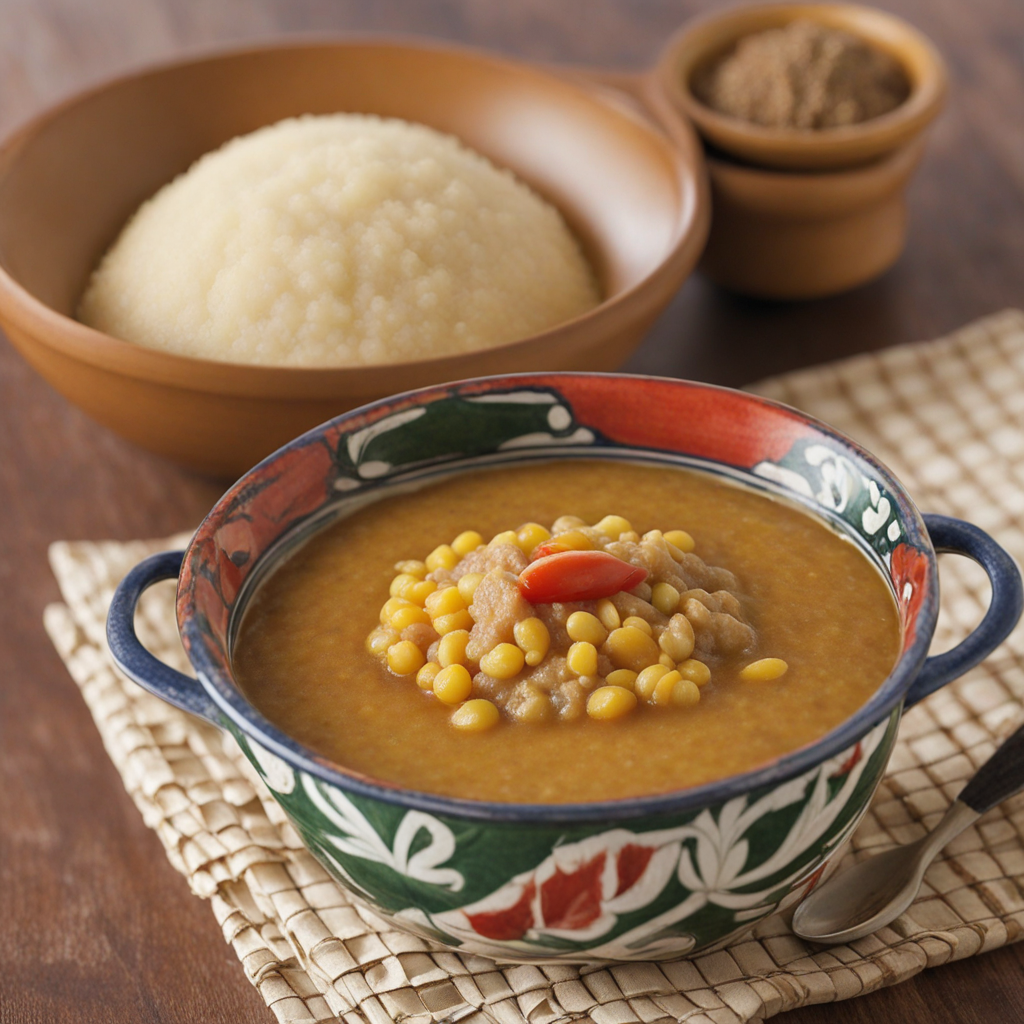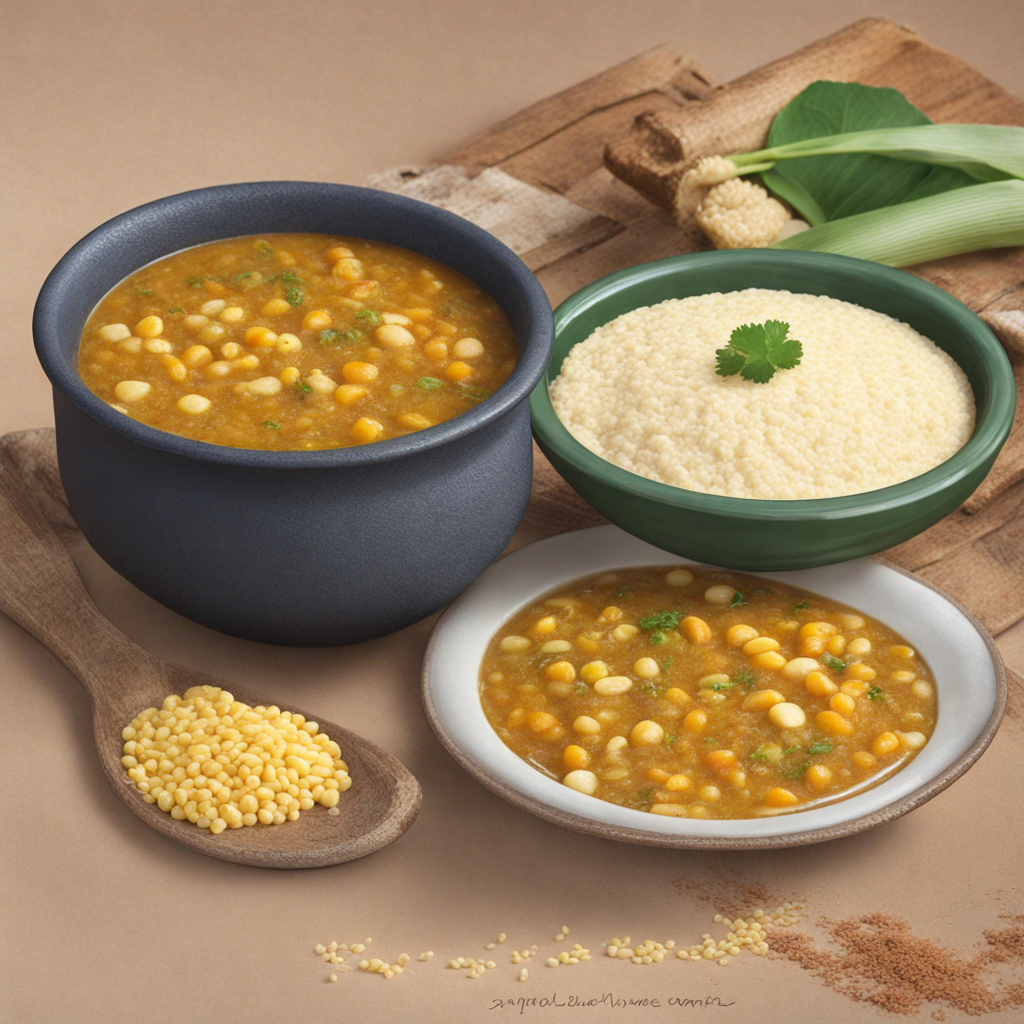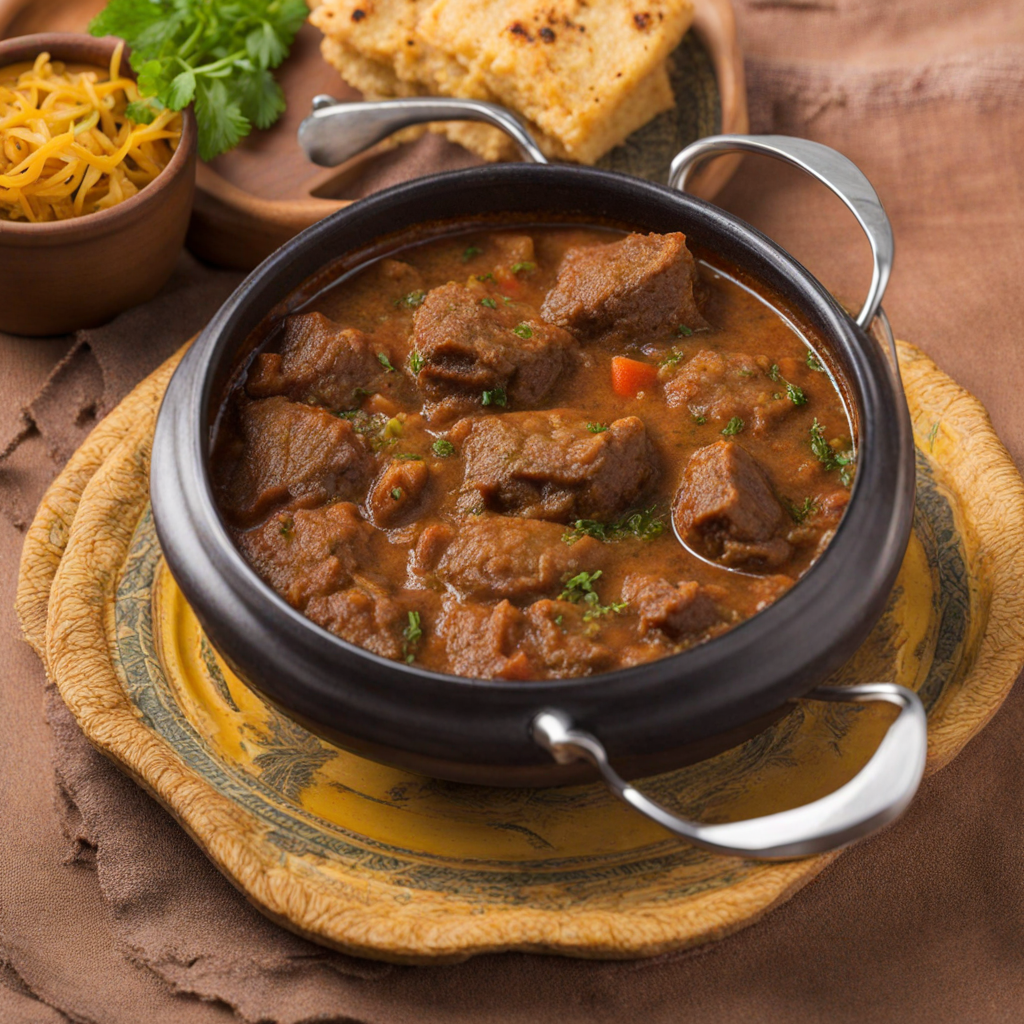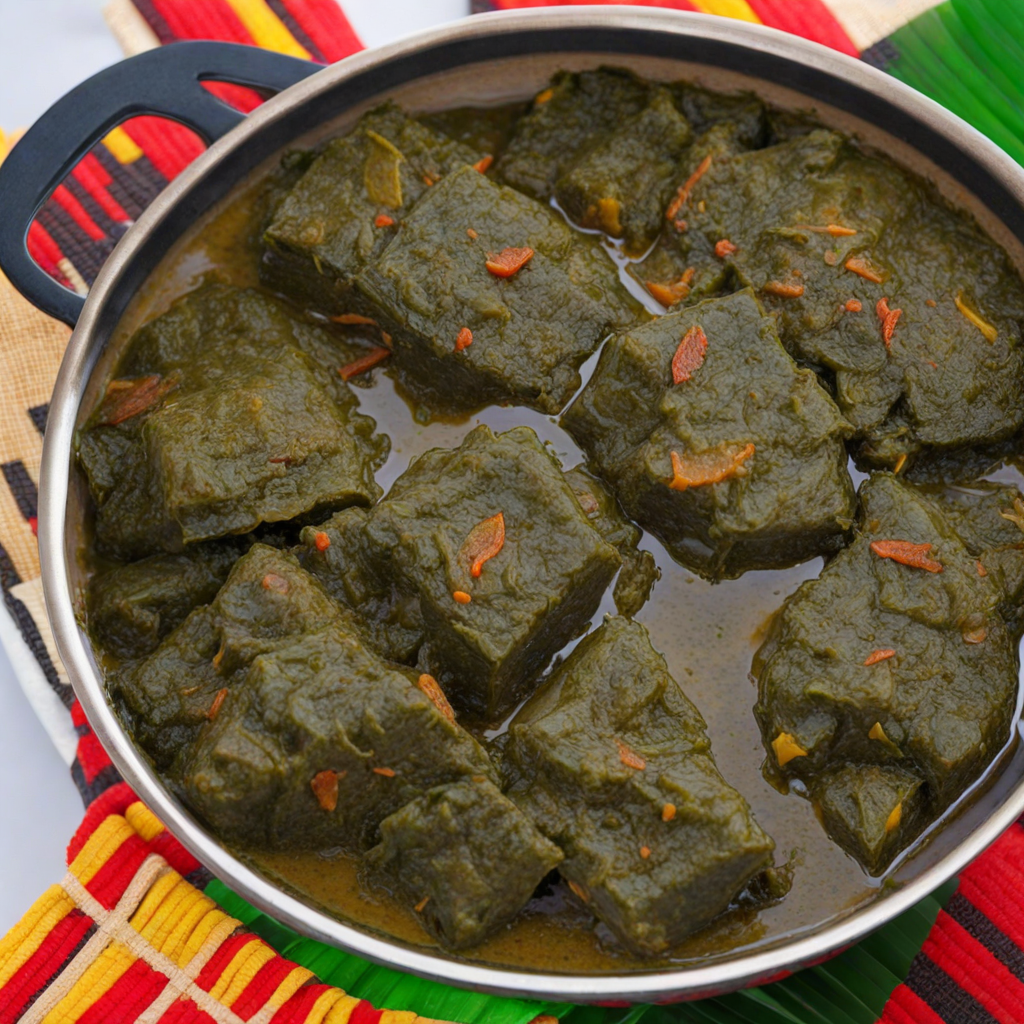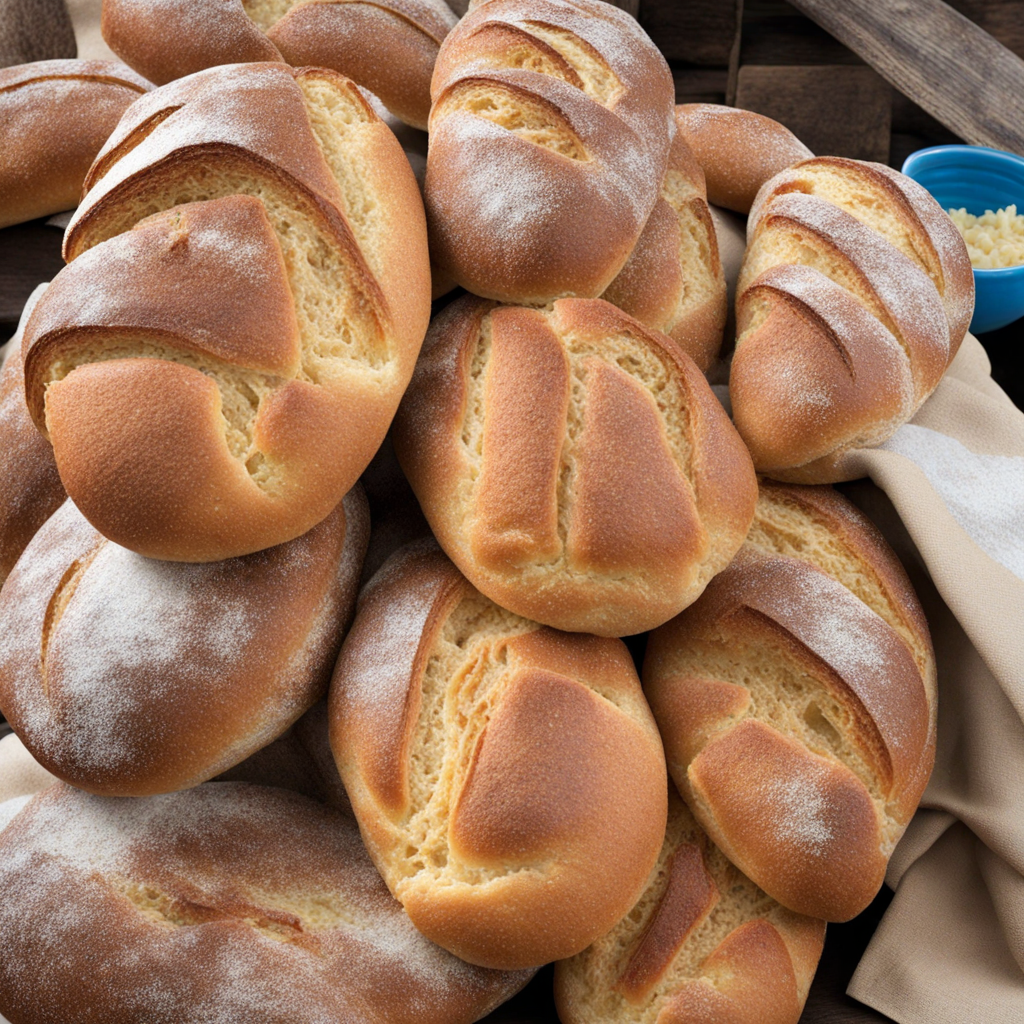Tô
Tô is a traditional dish from Guinea, celebrated for its comforting texture and versatility. Made primarily from ground grains such as millet or cassava, Tô is often prepared into a thick, dough-like consistency, which can be molded into a shape resembling a large, smooth cake. This staple food serves as a base on which a variety of flavorful sauces and condiments can be added, allowing for a unique culinary experience that varies with each meal. The simplicity of Tô's ingredients allows the natural flavors to shine through, making it a beloved choice for both locals and visitors looking to explore the essence of Guinean cuisine. To enjoy Tô, it is typically served alongside rich and savory sauces that may include ingredients like groundnuts, fish, or meats, spiced with local herbs and seasonings. Each bite presents a delightful combination of textures and flavors, as the dense Tô absorbs the vibrant sauces, creating a harmonious balance on the palate. The dish is often enjoyed communally, with diners using their hands to tear off pieces of Tô, making it not just a meal but a shared experience that fosters connection and camaraderie. Tô is not just a meal; it's a celebration of Guinean culture and culinary traditions. The dish reflects the agricultural practices of the region, showcasing the grains and ingredients that are locally sourced and cherished. Whether enjoyed in a bustling market or at a family gathering, Tô offers a taste of Guinea that is both satisfying and deeply rooted in the country's history, making it a must-try for any food enthusiast looking to expand their horizons.
How It Became This Dish
The History of Tô: A Culinary Heritage of Guinea #### Origins Tô, a staple food in Guinea, has its roots deeply embedded in the agricultural practices and culinary traditions of West Africa. The dish is primarily made from ground grains or starchy tubers, most commonly cassava, millet, or corn, which are cooked into a thick, dough-like consistency. This versatile food has been a part of the local diet for centuries, serving as a fundamental source of energy and sustenance for various ethnic groups in Guinea, including the Malinké, Susu, and Fulani. The origins of Tô can be traced back to the agricultural practices of the pre-colonial era, where communities cultivated various crops suited to the humid tropics of West Africa. The region's rich biodiversity allowed for the cultivation of cassava and millet, which became essential to the local diet. As these crops were harvested, traditional methods of processing and cooking evolved, leading to the birth of Tô. The word "Tô" itself is derived from the local languages, reflecting the cultural significance of the food across different communities. #### Cultural Significance Tô is more than just a food item; it is a representation of cultural identity and community bonding in Guinea. Traditionally, it is served alongside rich sauces, often made from vegetables, meats, or fish, allowing for a flavorful combination that enhances the eating experience. The preparation and sharing of Tô are often communal activities, fostering social connections and reinforcing cultural ties among families and friends. In many Guinean households, Tô is more than just sustenance; it is a symbol of hospitality. When guests arrive, it is customary to offer Tô, accompanied by various sauces, as a gesture of welcome and generosity. This practice underscores the importance of communal sharing in Guinean culture, where food acts as a medium for building relationships and fostering community spirit. Moreover, Tô plays a significant role in various ceremonies and celebrations. It is often served during important life events such as weddings, naming ceremonies, and religious festivals. The preparation of Tô for these occasions is often a collective effort, involving multiple family members and friends, which reinforces social bonds and cultural heritage. #### Development Over Time As Guinea underwent significant changes throughout history, including the impacts of colonialism and globalization, Tô has adapted while retaining its core cultural significance. During the colonial period, European powers sought to exploit West Africa's resources, leading to changes in agricultural practices and food availability. Despite these challenges, Tô remained a resilient staple in the Guinean diet, showcasing the adaptability of local culinary traditions. In the post-colonial era, as Guinea gained independence in 1958, there was a renewed interest in preserving and promoting indigenous foods like Tô. The Guinean government and various NGOs began initiatives aimed at encouraging local agriculture and food production, recognizing the importance of traditional foods in national identity. Tô, with its simple ingredients and nourishing qualities, became a focal point in efforts to promote food security and self-sufficiency. The rise of globalization has also influenced the way Tô is prepared and consumed. While traditional methods of cooking Tô remain prevalent, urbanization has introduced new cooking techniques and ingredients. In urban areas, for instance, pre-packaged versions of Tô made from instant flour have gained popularity due to their convenience. This shift reflects a broader trend where traditional foods are being modernized to fit contemporary lifestyles while still maintaining their cultural roots. Despite these changes, the essence of Tô has endured. Culinary practices surrounding Tô remain a testament to the resilience of Guinean culture. Families continue to gather to prepare Tô from scratch, using traditional grinding stones and wooden utensils, thereby passing down techniques and recipes through generations. Such practices not only preserve the flavors of the past but also ensure the continuity of cultural heritage. #### Tô in Contemporary Guinea In contemporary Guinea, Tô has evolved into a versatile dish that adapts to modern tastes and dietary preferences. While cassava and millet remain the primary ingredients, there is an increasing trend to incorporate other grains and flavors, reflecting the influence of globalization and culinary innovation. Chefs and home cooks alike experiment with different sauces, introducing ingredients such as peanuts, okra, and even spices from other culinary traditions, creating a fusion of flavors that caters to diverse palates. Moreover, Tô has found its way into the international culinary scene, with diaspora communities and food enthusiasts showcasing this traditional dish at cultural festivals and food fairs worldwide. This exposure not only celebrates Guinean culinary heritage but also promotes a greater understanding of West African cuisine as a whole. In addition to its culinary significance, Tô continues to play an important role in discussions about food security and sustainable agriculture in Guinea. As the country faces challenges such as climate change and economic constraints, Tô's adaptability and reliance on locally sourced ingredients make it a vital component in addressing food sovereignty and resilience. Efforts are being made to promote the cultivation of indigenous crops, ensuring that traditional foods like Tô remain accessible and nutritious for future generations. #### Conclusion The history of Tô in Guinea is a fascinating narrative of resilience, cultural significance, and adaptability. From its origins as a staple food in agricultural communities to its role as a symbol of hospitality and social connection, Tô remains a cherished part of Guinean identity. As the country navigates the complexities of modernity and globalization, Tô continues to evolve, reflecting the dynamic nature of culinary traditions. Its enduring legacy is a testament to the power of food not just as sustenance, but as a vital thread connecting people, culture, and history.
You may like
Discover local flavors from Guinea


